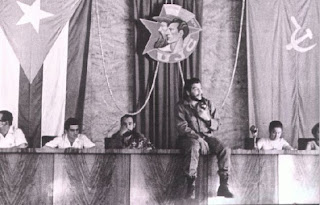 Guevara's body was then lashed to the landing skids of a helicopter and flown to nearby Vallegrande where photographs were taken, showing a figure described by some as "Christ-like" lying on a concrete slab in the laundry room of the Nuestra Señora de Malta hospital.
Guevara's body was then lashed to the landing skids of a helicopter and flown to nearby Vallegrande where photographs were taken, showing a figure described by some as "Christ-like" lying on a concrete slab in the laundry room of the Nuestra Señora de Malta hospital. A declassified memorandum dated October 11, 1967 to United States President Lyndon B. Johnson from his National Security Advisor, Walt Whitman Rostow, called the decision to kill Guevara "stupid" but "understandable from a Bolivian standpoint." After the execution, Rodríguez took several of Guevara's personal items, including a watch which he continued to wear many years later, often showing them to reporters during the ensuing years. Today, some of these belongings, including his flashlight, are on display at the CIA. After a military doctor amputated his hands, Bolivian army officers transferred Guevara's body to an undisclosed location and refused to reveal whether his remains had been buried or cremated. The hands were preserved in formaldehyde to be sent to Buenos Aires for fingerprint identification. (His fingerprints were on file with the Argentine police.) They were later sent to Cuba. On October 15, Castro acknowledged that Guevara was dead and proclaimed three days of public mourning throughout the island. On October 18, Castro addressed a crowd of almost one million people in Havana and spoke about Guevara's character as a revolutionary. May all disenfranchised people of the world be liberated.
May all disenfranchised people of the world be liberated.
No comments:
Post a Comment